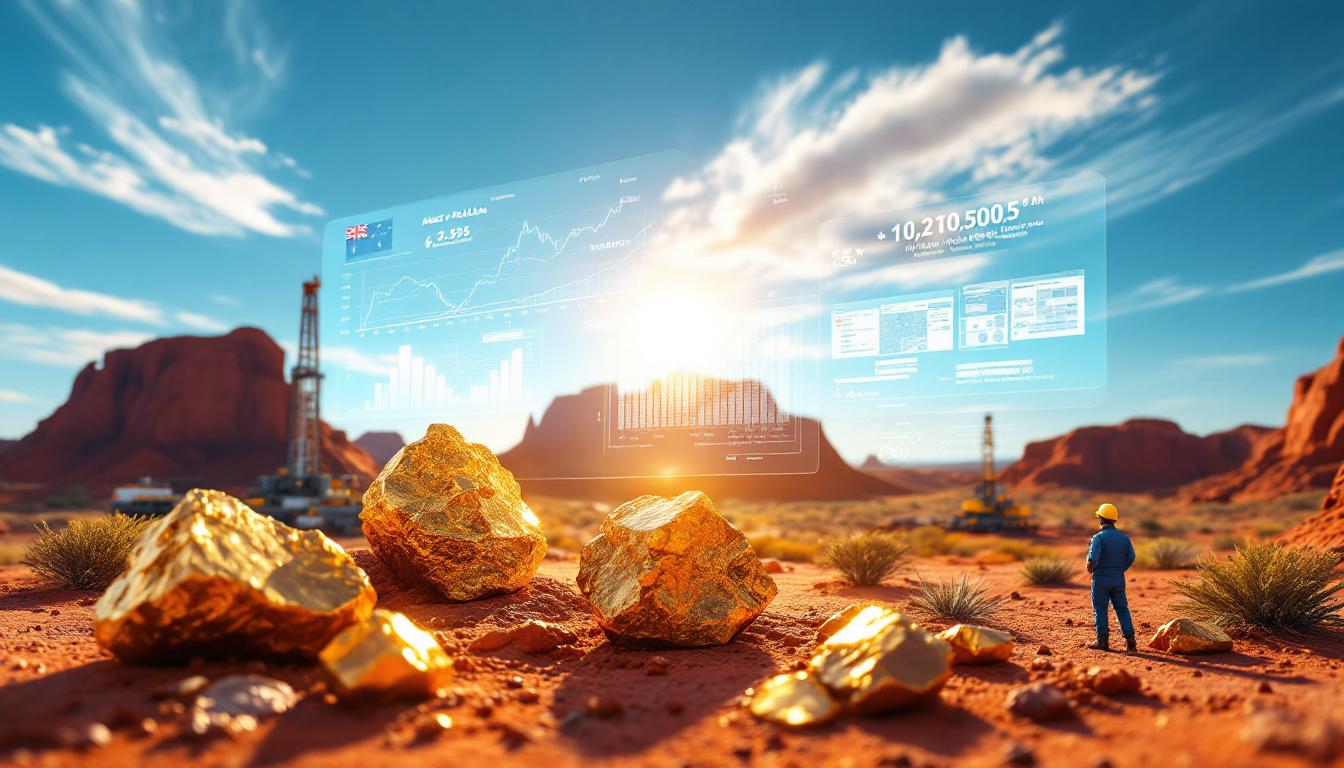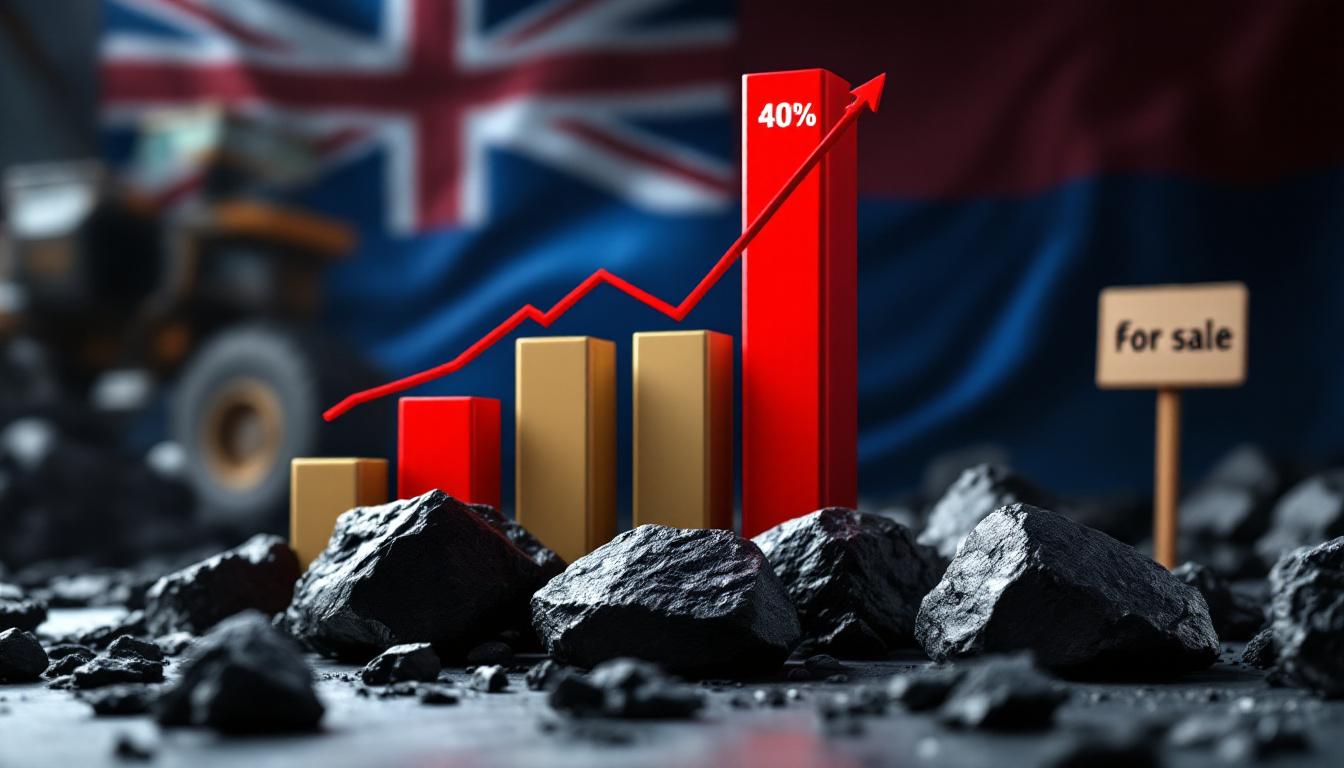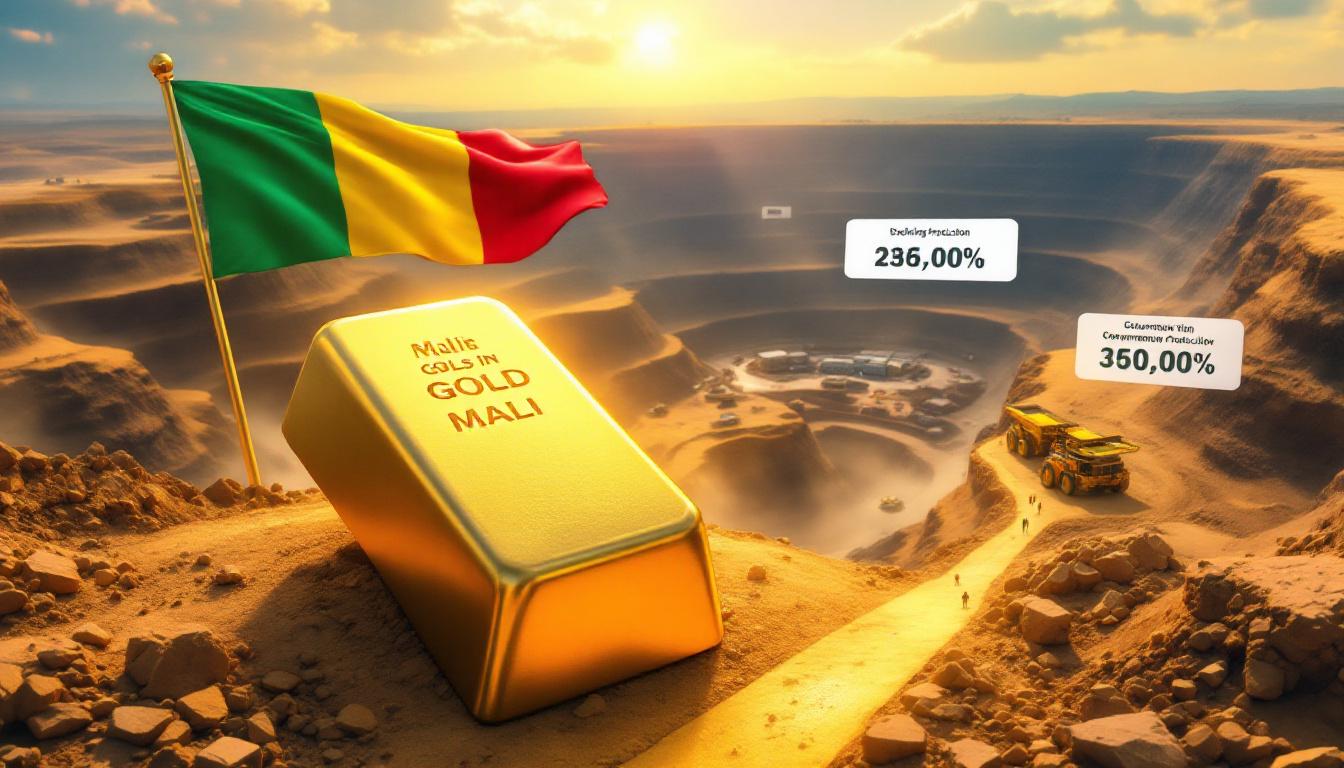What Are the Key Details of the US-China Rare Earth Export Agreement?
The United States and China have reached a significant understanding to expedite rare earth shipments to the US, as announced by a White House official on June 26, 2025. This agreement follows negotiations in Geneva in May, where China committed to removing non-tariff countermeasures imposed against the United States since April 2. The understanding establishes a framework to implement the Geneva agreement specifically focusing on rare earth exports.
Timeline of Recent US-China Trade Tensions
- April 2, 2025: China implemented non-tariff countermeasures against the US, including adding rare earths to its controlled export list as retaliation for US tariffs
- May 2025: Geneva negotiations resulted in China's commitment to remove these restrictive measures
- June 26, 2025: White House confirms the understanding on rare earth exports, marking a potential turning point in the trade dispute
Official Statements on the Agreement
The White House described the agreement as "a framework to implement the Geneva agreement" specifically "about how we can implement expediting rare earths shipments to the US again," highlighting the strategic importance of resuming these critical mineral flows.
US Commerce Secretary Howard Lutnick provided a conditional timeline, stating: "They're going to deliver rare earths to us" and once they do that "we'll take down our countermeasures," suggesting a phased implementation approach based on verification of actual shipments.
"This agreement represents a pragmatic approach by both nations to address supply chain vulnerabilities while managing broader US‑China trade tensions," noted a senior trade official familiar with the negotiations.
Why Are Rare Earth Elements So Critical for Both Nations?
Rare earth elements (REEs) represent a group of 17 metallic elements crucial for manufacturing high-tech products and supporting the green energy transition. Their strategic importance extends beyond economic considerations into national security realms.
Strategic Applications of Rare Earth Elements
- Defense Technology: Used in precision-guided weapons, radar systems, and communication equipment. A single F-35 fighter jet requires approximately 417 kg of rare earth materials.
- Renewable Energy: Essential for wind turbines (requiring up to 600 kg of rare earths per megawatt) and electric vehicle motors (using neodymium and dysprosium)
- Consumer Electronics: Critical components in smartphones, computers, and displays—the average smartphone contains 8-9 different rare earth elements
- Medical Equipment: Used in MRI machines and specialized medical devices, with gadolinium compounds serving as contrast agents
China's Dominant Position in the Global Rare Earth Market
China controls approximately 85% of global processing capacity and produces about 70% of the world's rare earth elements, according to the latest U.S. Geological Survey data. This dominance stems from decades of strategic investment and less stringent environmental regulations.
China's rare earth advantage includes:
- Processing Expertise: Advanced separation technologies developed over 30+ years
- Integrated Supply Chains: From mining to finished magnets and components
- Scale Economies: Lower production costs through massive production volumes
- Strategic Stockpiles: Government-maintained reserves for domestic use
The Chinese mining industry has also developed proprietary extraction methods that reduce production costs by up to 30% compared to emerging Western processors, further cementing their market advantage.
How Did Rare Earths Become a Trade War Bargaining Chip?
The inclusion of rare earth elements in trade disputes represents a strategic calculation by both nations, highlighting the vulnerability of supply chains and the geopolitical importance of these resources.
Evolution of Rare Earths in US-China Trade Relations
- Historical Context: China has previously used rare earth export restrictions as leverage in diplomatic disputes, most notably in 2010 when it restricted exports to Japan during territorial disputes
- Recent Escalation: In April 2025, China added rare earths to its controlled export list as retaliation to US tariffs
- Strategic Significance: Rare earths represent one of China's strongest bargaining chips in trade negotiations due to limited alternative sources
As Eugene Tan, a prominent trade analyst, noted in 2023: "Rare earths are China's 'nuclear option' in trade wars due to supply chain leverage."
Economic Implications of Export Restrictions
The 2025 export controls created significant disruptions for US technology manufacturers:
- Supply Uncertainties: Production delays at defense contractors and EV manufacturers
- Price Volatility: Spot market prices for neodymium oxide increased by 65% during the two-month restriction period
- Accelerated Alternatives: US investments in rare earth mining and processing doubled compared to 2024 levels
- Supply Chain Restructuring: Major tech companies initiated contingency sourcing from Australia and Canada
The export restrictions demonstrated the vulnerability of global high-tech manufacturing to rare earth supply disruptions, revealing critical dependencies that extended beyond consumer electronics into national security infrastructure.
What Impact Will This Agreement Have on Global Supply Chains?
The new understanding between the US and China could significantly reshape global rare earth supply dynamics, with implications for manufacturers, investors, and competing rare earth producers worldwide.
Short-term Market Effects
The immediate impact of the agreement includes:
- Price Stabilization: Analysts predict a 15-20% decrease in rare earth prices as Chinese supply resumes
- Manufacturing Relief: US technology producers report reduced supply chain anxiety
- Investment Recalibration: Some alternative supply projects may face revised timelines
- Trading Pattern Normalization: Expected resumption of historical import volumes within 60-90 days
According to metals analyst Maria Chen: "The agreement provides breathing room for manufacturers, but long-term diversification strategies will likely continue, albeit at a less urgent pace."
Long-term Strategic Implications
Despite the immediate relief, fundamental concerns remain:
- Agreement Durability: Questions persist about enforcement mechanisms and compliance verification
- Continued Vulnerability: The US remains dependent on Chinese processing capabilities
- Alternative Project Viability: Emerging rare earth producers must compete with resumed Chinese exports
- Strategic Reassessment: US policy makers face renewed pressure to balance immediate supply needs with long-term security goals
The agreement doesn't solve the underlying structural imbalance in global rare earth supply chains, but rather provides a temporary de-escalation while both sides pursue their strategic interests.
How Are Other Countries Responding to Rare Earth Supply Challenges?
The US-China rare earth export agreement comes amid global efforts to reduce dependence on Chinese rare earth supplies, with several countries and companies pursuing alternative sources and processing capabilities.
Alternative Supply Development Initiatives
- Australia: Lynas Rare Earths has expanded production capacity by 50% since 2023 and is developing new separation facilities with $120 million in government support
- Canada: Investing $200 million in exploration and development of rare earth deposits, with significant discoveries in Northwest Territories
- European Union: Created a €2 billion strategic stockpile and allocated €500 million for recycling technologies research
- Japan: Advanced urban mining techniques have reduced imports by 15%, recovering rare earths from 80+ million discarded electronic devices annually
"The race to establish rare earth supply chains outside China has accelerated dramatically since 2023," notes Dr. James Litchfield, mineral economist at the Queensland Resource Institute. "We're seeing unprecedented cooperation between governments and private industry to overcome technical and financial barriers."
Emerging Rare Earth Projects Outside China
- US Developments: Companies like Phoenix Tailings pursuing domestic refining capabilities with potential IPO within three years, targeting 5,000 tons annual capacity
- African Projects: Tanzania and Namibia have attracted over $350 million in rare earth exploration investment
- South American Initiatives: Brazil's Serra Verde project aims to produce 5,500 tons of rare earth oxides annually by 2026
- Processing Technology Advancements: New solvent extraction methods reduce chemical usage by 40% and water requirements by 60%
The global response represents a significant shift in rare earth supply chain thinking, moving from just-in-time procurement to strategic resource security.
What Are the Environmental Considerations in Rare Earth Production?
Rare earth mining and processing present significant environmental challenges, which have contributed to China's dominance as other countries have been reluctant to accept the environmental costs associated with production.
Environmental Impacts of Traditional Rare Earth Processing
Conventional rare earth extraction and processing creates severe environmental problems:
- Water Pollution: Traditional processing generates 2,000 tons of toxic wastewater per ton of rare earth oxides
- Radioactive Waste: Many rare earth deposits contain thorium and uranium, requiring specialized waste management
- Energy Consumption: Processing requires 5-10 times more energy than conventional metal refining
- Land Disturbance: Open-pit mining in China has damaged approximately 12,000 hectares of land
The environmental cost disparity remains substantial, with Chinese operations operating under less stringent regulations than would be permitted in most Western nations.
Emerging Cleaner Technologies
Innovation is helping reduce environmental impacts:
- Bioleaching: Microorganisms can extract rare earths with 80% less chemical usage
- Direct Extraction: New techniques can recover rare earths from phosphogypsum waste, converting environmental liabilities into assets
- Closed-Loop Systems: Recycling 95% of process water and chemicals
- Renewable Energy Integration: Solar-powered processing facilities reducing carbon footprint by up to 60%
"The environmental challenge is now a technological opportunity," explains Dr. Miranda Cho, environmental engineer at the Advanced Materials Institute. "Companies that solve the green processing challenge will have competitive advantage in Western markets where mining sustainability trends drive purchasing decisions."
How Should Investors Interpret the US-China Rare Earth Agreement?
For investors in the mining and technology sectors, the US and China understanding in rare earth exports presents both opportunities and challenges that require careful analysis.
Investment Implications for Different Sectors
- Established Rare Earth Producers: Chinese producers like Northern Rare Earth Group may see stock price stabilization after recent volatility
- Emerging Producers: Projects with lower production costs (below $45/kg REO) remain viable despite renewed Chinese competition
- Technology Manufacturers: Companies heavily dependent on rare earth inputs (e.g., wind turbine and EV manufacturers) should see reduced input cost volatility
- Defense Contractors: Short-term supply concerns alleviated, but long-term strategic sourcing requirements remain
The market has reacted with cautious optimism, with rare earth producer stocks initially dropping 5-8% on agreement news before stabilizing as investors recognized the continued long-term demand growth.
Key Factors for Investor Consideration
Investors should monitor several critical indicators:
- Implementation Timeline: Watch for actual shipment resumption confirmation
- Verification Mechanisms: Transparency in measuring compliance with agreement terms
- Broader Trade Relations: Potential for renewed restrictions if other trade tensions escalate
- Policy Support: Continued government incentives for domestic rare earth development despite agreement
"Smart investors will look beyond the headline agreement to the structural changes in global mineral supply chains," advises commodity strategist Robert Jansen. "The rare earth market is undergoing fundamental transformation regardless of temporary trade accommodations."
What Are the Geopolitical Implications Beyond US-China Relations?
The rare earth agreement between the US and China has broader implications for global economic realignment and strategic mineral supply chains worldwide.
Global Power Dynamics and Resource Control
The agreement highlights several geopolitical trends:
- Resource Nationalism: Growing government intervention in critical mineral markets
- Alliance Realignment: Formation of mineral security partnerships outside traditional security alliances
- Technology Competition: Access to rare earths increasingly framed as national competitiveness issue
- Policy Coordination: G7 nations discussing coordinated critical minerals strategy development
"We're witnessing the emergence of a new resource geopolitics," explains Dr. Amara Nwosu, international relations expert. "Critical minerals like rare earths are becoming as strategically important as oil was in the 20th century."
Effects on Allied Nations and Trading Partners
The agreement creates ripple effects across global supply networks:
- Australia: As a major rare earth producer and US ally, faces market uncertainty but continues strategic partnership development
- European Union: Accelerating its €1.6 billion critical raw materials supply initiatives despite temporary market relief
- Japan: Maintains its 60-day strategic rare earth stockpile requirement despite agreement
- Developing Nations: Countries with rare earth deposits like Vietnam and Brazil see continued investment interest despite China's market return
The agreement represents just one move in a much larger strategic repositioning around critical minerals that will continue to reshape global trade and security relationships through the 2030s.
FAQ: US-China Rare Earth Export Agreement
What specific rare earth elements are covered by this agreement?
While the announcement doesn't specify individual elements, the agreement likely covers all 17 rare earth elements that were previously subject to export controls, including neodymium, dysprosium, and terbium, which are particularly critical for high-tech applications. The most commercially significant are the "magnetic rare earths" used in permanent magnets, representing about 90% of the market value.
How quickly will rare earth shipments resume under this agreement?
The timeline for implementation hasn't been publicly disclosed, but Commerce Secretary Lutnick's statement suggests a conditional approach where US countermeasures will be removed after China resumes shipments, indicating a phased implementation. Industry experts anticipate the first shipments could resume within 30 days, with full normalization taking 2-3 months.
Will this agreement affect rare earth prices globally?
The agreement will likely stabilize prices in the short term by increasing supply certainty. During the export restrictions, prices for some critical rare earths increased by 40-65%. Analysts predict a 15-20% price correction as Chinese supply resumes. However, long-term pricing will continue to be influenced by global demand growth, particularly from clean energy technologies, and the development of alternative supply sources.
How does this agreement affect US efforts to develop domestic rare earth production?
While the agreement reduces immediate supply pressures, the strategic vulnerability demonstrated during the dispute will likely ensure continued investment in domestic rare earth capabilities, though possibly at a less urgent pace than during the export restrictions. The Department of Energy's $675 million rare earth processing investment program remains active, suggesting continued commitment to supply diversification.
What verification mechanisms exist to ensure compliance with the agreement?
The specific verification and monitoring mechanisms haven't been publicly detailed. Effective implementation will require clear metrics for measuring export volumes and processing times to ensure the agreement delivers meaningful improvements in rare earth availability. Industry sources suggest monthly reporting requirements may be implemented through a joint monitoring committee.
Conclusion: The Future of Rare Earth Supply Chains
The US and China understanding in rare earth exports represents a significant development in the ongoing reconfiguration of global critical mineral supply chains. While addressing immediate concerns about rare earth availability for US manufacturers, the agreement doesn't resolve the fundamental strategic vulnerabilities created by China's rare earth advantage in the market.
For both nations, rare earths remain a powerful bargaining chip in broader economic and geopolitical relations. The agreement demonstrates pragmatism from both sides but leaves open questions about long-term supply security and the future development of alternative rare earth sources worldwide.
As global demand for rare earths continues to grow, driven by clean energy technologies and advanced electronics, the sustainability of any single-source supply chain remains questionable. Industry projections indicate rare earth demand could increase by 200-300% by 2035, primarily driven by electric vehicle and wind turbine manufacturing expansion.
The agreement may provide breathing room, but the strategic imperative to diversify rare earth supplies continues to shape investment and policy decisions across the developed world. As one industry expert noted, "The rare earth saga isn't ending with this agreement—it's merely entering a new chapter."
Disclaimer: This analysis contains forward-looking statements about market developments and industry trends. Actual outcomes may differ substantially from projections. Readers should consult with financial advisors before making investment decisions based on this information.
Want to Stay Ahead of Major Mineral Discoveries?
Discovery Alert's proprietary Discovery IQ model provides real-time notifications when significant ASX mineral discoveries occur, giving traders and investors an immediate edge in the market. Explore how historic discoveries have generated substantial returns by visiting our dedicated discoveries page and begin your 30-day free trial today.




